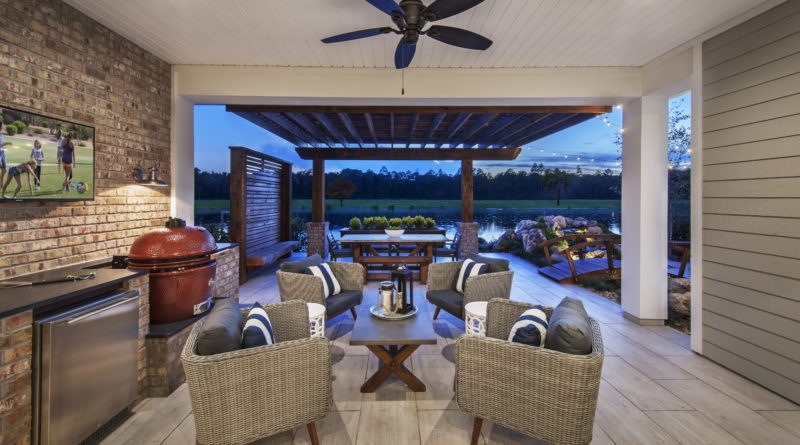Top Patio Trends: Looking Back at 2024 and Leaping into 2025
According to the NAHB, as the boundaries between indoor and outdoor living continue to blur, patios have evolved into sophisticated extensions of the home. In 2024, we witnessed a remarkable transformation in patio design, driven by a desire for personalized, functional, and sustainable outdoor spaces.
2024: A Year of Seamless Indoor-Outdoor Living
As Houzz reported, the demand for outdoor spaces has surged by 50% since 2020, highlighting the growing desire for harmonious living environments. 2024 saw a surge in demand for personalized and integrated outdoor spaces. Key trends that defined patio design in 2024 include:
- Multi-functional Spaces: Patios have evolved into versatile hubs for relaxation, entertainment, and even remote work. According to the National Association of Realtors, 64% of home owners aspire to create multi-functional outdoor spaces, a confirmed trend in 2024 and that is poised to accelerate in the coming year.
- Customization and Personalization: Home owners are seeking to infuse their unique personalities into their outdoor spaces. With 75% of millennials expressing interest in outdoor kitchens, and a 40% increase in entertainment areas, customization is at the forefront of patio design.
- Smart Technology Integration: The integration of smart technology has revolutionized the patio experience. Motorized louvers, integrated LED lighting, and voice-activated controls offer unparalleled convenience and energy efficiency. The global smart-home industry, valued at $154.4 billion, underscores the growing demand for smart solutions.
2025: A Glimpse into the Future of Patio Design
Looking ahead to 2025, we anticipate a continuation of these trends, with an even greater emphasis on sustainability, durability, and adaptability. As the outdoor living market is projected to reach $26.8 billion by 2027, home owners will seek innovative solutions that enhance their outdoor experiences.
- Biophilic Design: Incorporating natural elements like plants, water features, and natural materials into outdoor spaces.
- Sustainable Materials: Adopting eco-friendly materials, such as aluminum and responsibly sourced wood.
- Modular and Customizable Designs: Offering flexibility and adaptability in creating personalized outdoor spaces to suit home owners’ changing needs and preferences.
- Enhanced Privacy: As privacy concerns grow, innovative solutions like retractable screens and privacy walls will become increasingly popular, providing secluded and intimate outdoor retreats.




